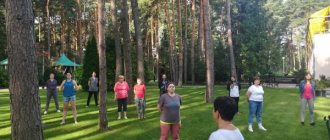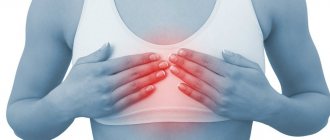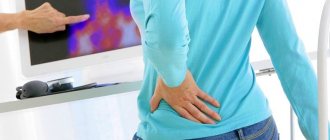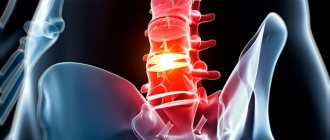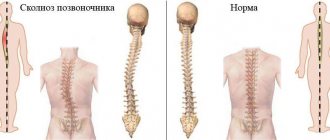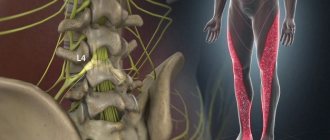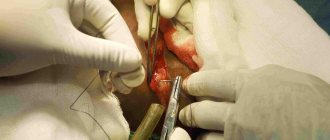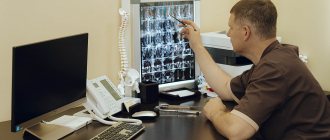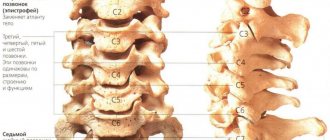30.01.2021
Kyphoscoliosis is a simultaneous sideways curvature of the spine and stoop. The human spine has natural curves. But when factors are favorable for the development of deformities, kyphosis is formed first - a curvature in the chest area, followed by scoliosis - a sideways bend of the spine.
Kyphoscoliosis appears as a concomitant deformity in many pathologies of the spine, after injuries and paralysis. The curvature is easy to see: the back and chest take an unnatural position. The disease is difficult to tolerate because the patient suffers from constant debilitating pain.
Kyphoscoliosis is common in adolescence and for some reason the disease prefers to affect boys four times more often than girls. Mild forms of kyphoscoliosis are accompanied by high fatigue and back discomfort.
Since we are talking about deformation of the thoracic region, the pathology negatively affects the functioning of the heart, lungs and abdominal organs. More severe forms are aggravated by neurological disorders.
What is kyphoscoliosis
An anatomically correctly developed spine has an S-shape, with 4 natural curves. Their main task is depreciation and proper distribution of the load on all parts of the spinal column. This form ensures stability and mobility of the body, protects organs from unnecessary shocks.
With kyphoscoliosis, curvature of the spine occurs in two directions - anteroposterior (in the thoracic region) and lateral. At the beginning, a stoop occurs, then a lateral curvature of the spine joins it.
Pathology analysis
The disease is recognized as widespread. It is much more common (about four times) in men (boys) than in women. Formed in an overwhelming number of episodes during puberty. During this period, the proportion of bone tissue growth is disrupted, and anomalies appear in the structural development of the vertebrae.
Kyphoscoliosis is most often diagnosed in boys during periods of increased bone growth.
By the way. At the initial stage, kyphoscoliosis can cause permanent fatigue and mild pain in a teenager. Then severe pain, neurological problems will arise, and the functioning of the pulmonary, cardiac and digestive systems will become difficult.
Orthopedic chair for children
To characterize this anomaly, it is necessary to turn to anatomy. The human spinal column is not perfectly straight. It has curves that are normal and provided by nature. That is, there are “normal” kyphosis and lordosis (bending back and forth) that are not an anomaly. One of them is thoracic kyphosis, two more lordoses are in the cervical and lumbar zone. They are designed to play a compensatory role when vertical loads are placed on the spinal column.
Physiological curves of the spinal column perform compensatory functions under vertical loads
Important! A curve of the spine forward or backward no more than 45 degrees is normal. If the bend exceeds this indicator, it is an anomaly.
As for lateral bends, nature does not provide them for the spine, so any sideways curvature, called scoliosis, is not the norm. Usually, pathological kyphosis first forms, then scoliosis joins, and a diagnosis of kyphoscoliosis of the thoracic spinal zone is established.
Lateral curvatures are not normal and are considered pathologies both independently and in combination with kyphosis
Why is kyphoscoliosis dangerous?
With kyphoscoliosis, the spine loses its natural position. This leads to overload of muscles and internal organs. The back is under constant tension. As a result, the following complications arise:
- early osteochondrosis;
- disc protrusion;
- intervertebral hernia;
- coxarthrosis;
- myositis and other pathologies.
The progressive disease limits the movement of the chest and diaphragm. As a result, there is a decrease in the elasticity and stretchability of lung tissue. This leads to a decrease in lung volume. As a consequence, there is a lack of oxygen in all systems and organs. An even greater deformation of the chest has a negative effect on the heart and impairs the mobility of the diaphragm.
In severe forms of the disease, deviations in the functioning of the digestive tract occur. Further progression of the disease can lead to disability.
Forecast
The prognosis depends on the degree of the disease and the rate of its progression. As a rule, with the help of adequate treatment for kyphoscoliosis of the first and second degrees, it is possible to completely eliminate the pathology of the spine. But for this, it is important to carry out treatment before the end of the period of active growth, that is, until approximately 15 years.
With third and fourth degree kyphoscoliosis, it is almost impossible to completely cure the disease. But with proper treatment, it is possible to stop the deformation and partially correct the curvature.
If left untreated, severe idiopathic kyphoscoliosis causes the person to die by age 50 due to pulmonary hypertension and respiratory failure.
Diagnostics
It is impossible to treat kyphoscoliosis without the help of a specialist. At the first suspicion of pathology, you should contact a neurologist or orthopedist. It is important to conduct a comprehensive examination here. A specialist from the Noosphere clinic will assess the degree of spinal deformation in different positions, check tendon reflexes, and assess muscle sensitivity and strength.
A patient with kyphoscoliosis is prescribed an X-ray of the spine. To accurately establish a diagnosis, our doctor conducts a comprehensive examination and uses the following diagnostic methods:
- MRI. Magnetic resonance imaging
- Ultrasound examination (ultrasound)
- Electrocardiogram (ECG)
- Laboratory research
Treatment of kyphoscoliosis at the Noosphere clinic
Kyphoscoliosis is treated with surgery or non-surgical methods. Surgery is a last resort and is prescribed in severe cases. Doctors at the Noosphere clinic treat kyphoscoliosis using non-surgical methods. They help cure the disease in the early stages and return the spine to its normal position.
Patients at the Noosphere clinic are individually prescribed a course of treatment. The doctor takes into account the degree of curvature of the spine, age, gender and characteristics of the patient’s body. The course includes at least five different procedures, the patient undergoes them 2-3 times a week. Treatment takes 3–6 weeks. The course consists of the following procedures:
- Resonance wave UHF therapy
Resonance wave therapy is a method of therapeutic effects on the aquatic environment of the body with low-intensity, high-frequency electromagnetic waves.
- Fermatron injections
Fermatron intra-articular injections are an effective method of treating various diseases of the musculoskeletal system by introducing a drug (chondroprotector) into the affected joint.
- Rehabilitation on the Thera-Band exercise machine
Treatment of the spine and joints using the Thera-Band simulator will restore limb mobility in a short period of time without expensive treatment in specialized sanatoriums.
- Block of joints and spine
Joint blockade is a type of drug treatment of the spine and joints aimed at relieving acute pain, inflammation and muscle spasms.
- Drug treatment
Drug treatment of joints and spine at the Noosphere clinic is used in a wide range and in combination with physiotherapy. Intra-articular injections, blockades and droppers.
Specialists at our clinic in St. Petersburg use the latest conservative techniques to correct the shape of the spine and eliminate body asymmetry. Kinesiotherapy is aimed at correcting posture and strengthening the paravertebral muscles. Therapy with medicinal leeches, acupuncture and physiotherapy block pain, relieve spasms, and improve blood circulation.
Wearing a corrective corset allows you to develop correct posture. Only a specialist can select an individual corset and determine the period of its use.
After completing a course of treatment in our clinic, patients can receive a free consultation with a specialist for another year. The doctor will give recommendations on maintaining the health of the spine and a manual with exercises that need to be performed at home.
Causes of kyphoscoliosis
The causes vary depending on the type of kyphoscoliosis. The congenital form is the result of abnormal intrauterine development.
A number of factors can provoke the disease in a healthy child:
- congenital pathology of connective tissue;
- injury to the spinal muscles and discs;
- surgical intervention;
- impaired bone formation as a result of rickets;
- excess weight;
- passive lifestyle;
- poor posture.
In addition, the provoking factor may be polio, cerebral palsy, congenital hip dysplasia or hip dislocation. The growing body of a teenager can be negatively affected by heavy load on the spine and heavy physical labor.
List of sources
- Nasonova, V.A. Diseases of the musculoskeletal system and connective tissue in Russia: dynamics of statistical indicators over 5 years (2005-2009) // Scientific and practical rheumatology. 2009. -N. 2. - P.4-12.
- Popelyansky Ya. Yu. Orthopedic neurology (Vertebroneurology): A guide for doctors / M.: MEDpress-inform, 2003. – 672 p.
- Shubkin M.V. Modern technologies for surgical treatment of deformities and diseases of the spine: materials of the third congress of spine surgeons of Russia with international participation. St. Petersburg, 2012. - pp. 195-196
Degrees of kyphoscoliosis
The disease is divided into the following degrees depending on the degree of spinal deformity:
- First. Difficult to visualize. A slight lateral bend is noticeable.
- Second. The curvature is noticeable. The deformation angle is 55-60 degrees. Significant twisting of the vertebrae.
- Third. The curvature angle is up to 75 degrees. The costal hump is visualized.
- Fourth. Dangerous stage of the disease. The angle of curvature is more than 75 degrees. The result is severe compression of internal organs. Serious deformation of the chest, pelvis, formation of a vertebral hump.
Clinical manifestations
Symptoms of kyphoscoliosis are as follows:
- pain in the back and neck;
- feeling of weakness in the lower extremities;
- presence of severe stoop;
- the appearance of shortness of breath during physical exertion;
- weakening of the abdominal muscles, long and short back muscles;
- disruption of the functioning of the gastrointestinal tract, heart and lungs.
Operations for diseases of the spine
- Cost: 100,000 - 250,000 rubles.
- Duration: 40-60 minutes
- Hospitalization: 2-3 days in hospital
More details
Prevention of kyphoscoliosis
Underdevelopment of the back muscles plays a major role in the development of the disease. This is why doctors recommend spending less time at the computer and in a sitting position. The best prevention is to engage in various sports (swimming, dancing, going to the gym, etc.). It is important to strengthen the muscular corset of the chest and back. A contrast shower tones the muscles well.
It is important to properly organize your sleeping area. An orthopedic mattress is purchased for children and teenagers. You should sleep on your back.
It is necessary to teach a teenager to correctly distribute the load on the spine - not to carry a backpack or a heavy bag on one shoulder. Take the correct posture during exercise - keep your back straight.
Proper nutrition plays an important role in preventing the development of kyphoscoliosis.
Fresh vegetables, fruits, and foods rich in calcium must be present in the daily diet. Children must wear proper shoes. The required heel height is 3-5 cm.
Diet
Diet for osteochondrosis
- Efficacy: no data
- Timing: constantly
- Cost of food: 1450-1780 rubles per week
Dietary nutrition cannot save a person from kyphoscoliosis. But still, for comprehensive treatment it is important to eat right. It is important to include foods containing vitamins B, C, D, P, as well as magnesium and calcium into the diet. The basis of the menu should be cereals, dairy products, eggs, lean meat, fish, vegetables and fruits.
It is important to give up pickles and smoked meats, alcohol, fast food, unnatural foods, marinades, etc.
